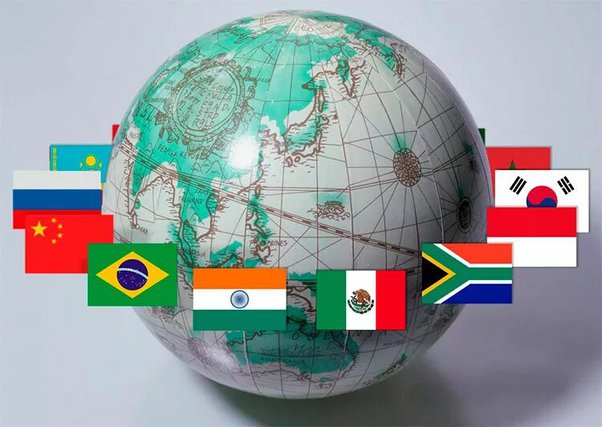Consider the following scenario: two people are striving to win the title of “Best in Category X”. One of them (we’ll call her Joanna, for no reason at all), comes from an upper-middle class family, went to good schools, received training from experts, and never had to worry about things like food, shelter, or being able to see a doctor. The other (let’s call him Joe – again, for no reason), has ambition and talent but came from a lower-income family and has not had the access to education, training, or even medical care that Joanna has had.
Based on only this information, you would probably think that Joanna has a big head-start over Joe. We do, too, so it shouldn’t surprise anyone when she is deemed to be the “Best” in a head-to-head competition. Now let’s assume that after their first contest they are both sent home and told to come back in six months for a second “bite at the apple”. No Hollywood ending here – Joe still loses to Joanna in Round Two, but the judges clearly see that he improved much more over the past six months than she did.
Different Resources and Starting Points
WHAT in the world are we getting at here? The phrase “in the world” is a clue. In comparing companies’ ESG practices to decide which are “best in class” (best in their industry or some other category), “Joanna” represents companies from developed market countries while “Joe” represents companies in emerging markets (EMs). It’s not that emerging market companies simply cannot hit sustainability targets, but a direct comparison with developed market companies is not really valid.
That’s why “Best in Class” is probably not the right approach when looking for emerging market companies that are doing a good job of identifying ESG risks and pursuing ESG-related opportunities. A “Best in Progress” approach is probably more appropriate. And, while the “E” pillar is always important, Social and Governance may emphasize different things, and perhaps may have an even greater urgency than what we often see in developed markets. It gets back to the most basic principles and goals of sustainable investing: to identify factors related to environmental, social and governance issues that could affect a company’s profitability and sustainability in the medium- to long-term.
Sustainable debt – particularly important in emerging markets
In addition to applying a “Best-in-Progress” lens, investors should know that in emerging markets, ESG is likely to focus more on bonds than in developed markets. According to a recent blog published by the International Monetary Fund, ESG investing now comprises almost 18% of foreign financing for emerging markets excluding China—four times the average seen in recent years. In 2021, sustainable debt issuance in emerging markets more than tripled, to $190 billion, versus 2020.
What is sustainable debt?
Sustainable debt consists of fixed income instruments that raise money from investors to support specific environmental and social purposes. The sustainable debt market has grown considerably since its inception and new types of securities have been created. Bloomberg defines these two main types of sustainable debt products:
- Activity-based products – These finance projects or activities that have a social and/or environmental benefit. That could be affordable housing or job creation, or investments in renewable energy capacity, and so on.
- Behavior-based products – These tie some characteristic of the bond, such as the interest rate paid to investors, to a sustainability target. These targets could be something like reducing CO2 emissions or decreasing the number of worker accidents in mines – something measurable.
Issuance and Inflows
While sustainable debt issuance is dominated by so-called “green bonds” that provide funds for environmental projects or targets (according to Bloomberg, volumes have been growing at an average annual rate of 20%), social and other sustainability-linked instruments represented almost half of total issuance over the period from 2019-2021.
A notable development in emerging market ESG financing is its growth outside of China. The IMF states that debt issuance for emerging market countries other than China made up almost half of the total in 2019-21, a substantial increase from the preceding three years. The IMF notes that in Chile alone, ESG issuance has reached nearly 12 percent of GDP over the last five years, while Peru and Mexico are also becoming important names in this space.
Inflows to sustainable equity funds in EMs have also grown but the total amount invested is much smaller compared to sustainable debt. Even if companies around the world had roughly equivalent resources to apply to improving sustainability (in other words, if Joe and Joanna had the same advantages going into their competition), flows to EM equity funds would still pale by comparison to their developed market counterparts because equity markets in EM countries are relatively small. The U.S. stock market alone represents slightly over 40% of the total value of equity markets globally and developed markets in total represent roughly 70%. Emerging markets excluding China and Hong Kong capture only 13% of all global equity investing.
We believe there are substantial opportunities for investors to incorporate ESG into analyses of emerging market. In addition to efforts to combat climate change which knows no borders, (and great ideas for new solutions can come from anywhere), emerging market countries have a strong interest in protecting biodiversity, and most have a great need to improve in the areas of health care, educational and financial inclusion, and governance. Attracting capital through both sustainable bonds and in the equity markets can make a big difference in how countries can achieve these goals while generating returns for investors.
OWL ESG’s comprehensive data covers markets globally, and our clients can customize datasets to emphasize key aspects of various markets of interest. Contact us to learn more.




